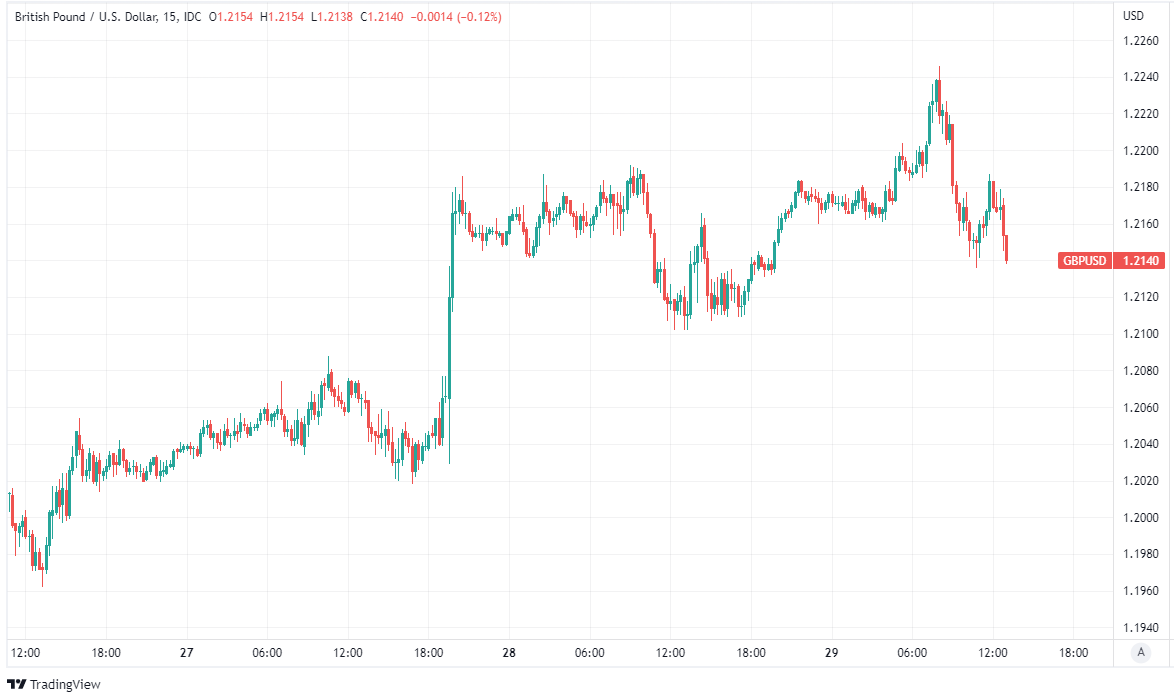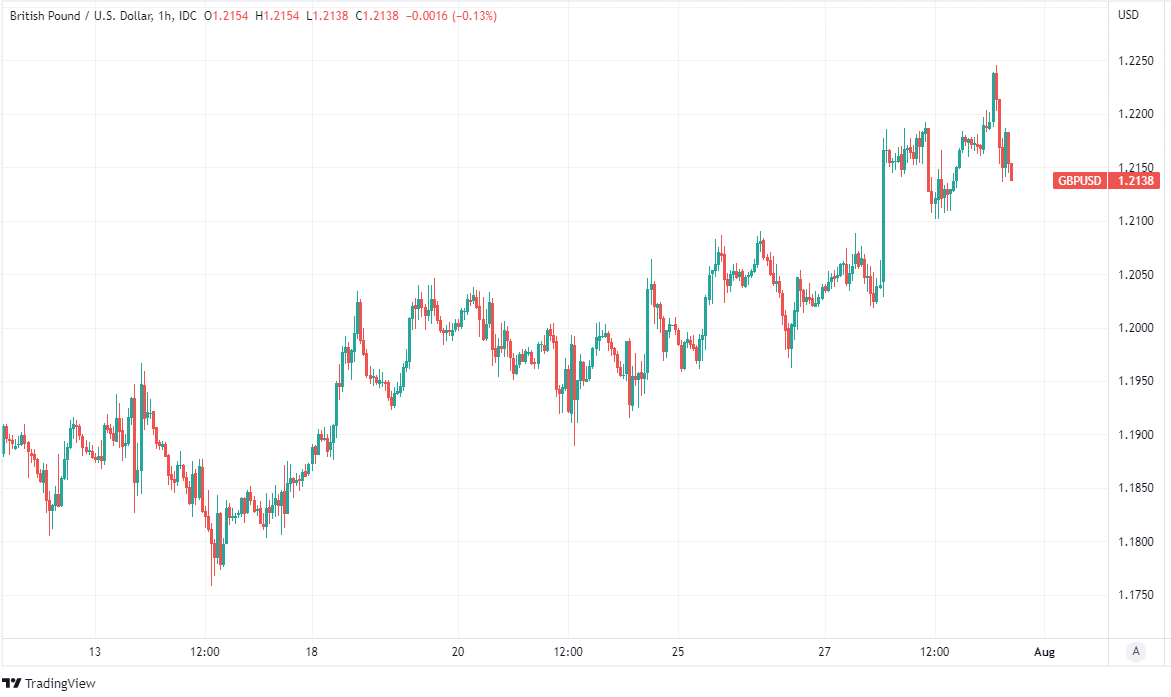GBP/USD Rally Tipped as Sell at HSBC Ahead of BoE Decision
- Written by: James Skinner
-
Image © Adobe Images
The Pound to Dollar exchange rate has rallied since the mid-month interval but strategists at HSBC are looking ahead to next week’s Bank of England (BoE) policy decision and suggesting that institutional clients of the bank consider selling in anticipation of a setback for Sterling.
Dollars have been sold widely in the near fortnight since the middle of the month and to the benefit of many currencies including Pound Sterling but HSBC Research is sceptical that the rally in GBP/USD can survive next Thursday’s interest rate decision and forecast update.
“Even if the BoE delivers a 50bp hike, it may do so with some dovish elements. These may come in the form of poorer growth forecasts in the August inflation report, which would likely increase market scepticism around the potential scale and persistence of future rate hikes,” writes Dominic Bunning, head of European FX research at HSBC, in a Thursday note to clients.
Overnight Index Swap contract rates implied on Thursday that Bank Rate will likely rise to 1.64% next Thursday, which above the 1.5% that would prevail if the BoE lifts the benchmark by 25 basis points but below the 1.75% that would stand if the BoE moves by a larger 50 basis points.
That amounts to something like a 68% implied probability of a larger than usual 0.50% increase and this itself indicates that Sterling could sustain a setback if the BoE sticks with the steady 0.25% pace of increases so far, which is one of the motivations for the HSBC trade idea.
 Above: Pound to Dollar rate shown at 15-minute intervals.
Above: Pound to Dollar rate shown at 15-minute intervals.
“We think that the balance of risks for GBP remains to the downside around the August meeting,” Bunning said.
The HSBC team advocated that clients sell the Pound-Dollar rate and look for a move down to 1.1890 in the weeks ahead but also suggested walking away from the trade if the market climbs as far as 1.2260 instead.
The Pound to Dollar reached highs of 1.2246 during early trading in London on Friday before correcting lower throughout much of the session.
“We wanted people to understand that, therefore, there are more options on the table than just 25 basis points and those options can go both ways,” Governor Andrew Bailey said at an Official Monetary and Financial Institutions Forum (OMFIF) even earlier this month.
For its part, the Bank of England warned that it could act “more forcefully” back in June and policymakers including Governor Andrew Bailey and Chief Economist Huw Pill have since suggested Bank Rate could rise faster and further than earlier forecasts and guidance had suggested was likely.
However, it remains debatable whether the economic conditions necessary for that step change have been satisfied in the interim.
 Above: Pound to Dollar rate shown at hourly intervals.
Above: Pound to Dollar rate shown at hourly intervals.
“Economic data released since the MPC’s last meeting, when it hiked by 25bp, do not make a strong case for a chunkier rate hike,” writes Samuel Tombs, chief UK economist at Pantheon Macroeconomics, in a Friday research briefing.
“In the context of current market pricing, Mr. Bailey’s utterance that “50 basis points is not locked in, and anyone who predicts that is doing so based on their own view” surely is a nod that the market-implied odds of a 25bp hike are too low. You can't say they didn't warn you this time,” he added.
The remarks from Bailey and Pill were most notable because so far they have voted to lift borrowing costs in increments of only 0.25% and a change of heart from these two could be enough to tip the majority on the nine seat Monetary Policy Committee in favour of a larger 0.5% increment.
But the potential rub for Sterling is that the core inflation rate fell from 5.9% to 5.8% in June while the level of wage and salary growth has remained contained at rates no higher than before the BoE's June policy decision.
This is important because it indicates that recent and ongoing increases in energy and food costs have not continued to push up other prices across the economy in the most recent months, denoting an absence of the “second round effects” that would catalyse any more forceful response from the BoE.
Above: Pound to Dollar rate shown at daily intervals.













